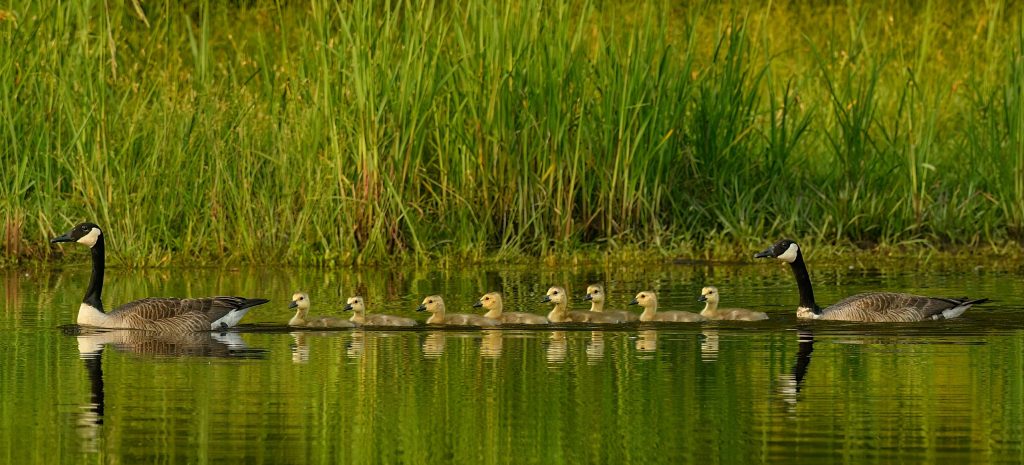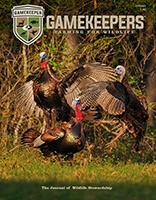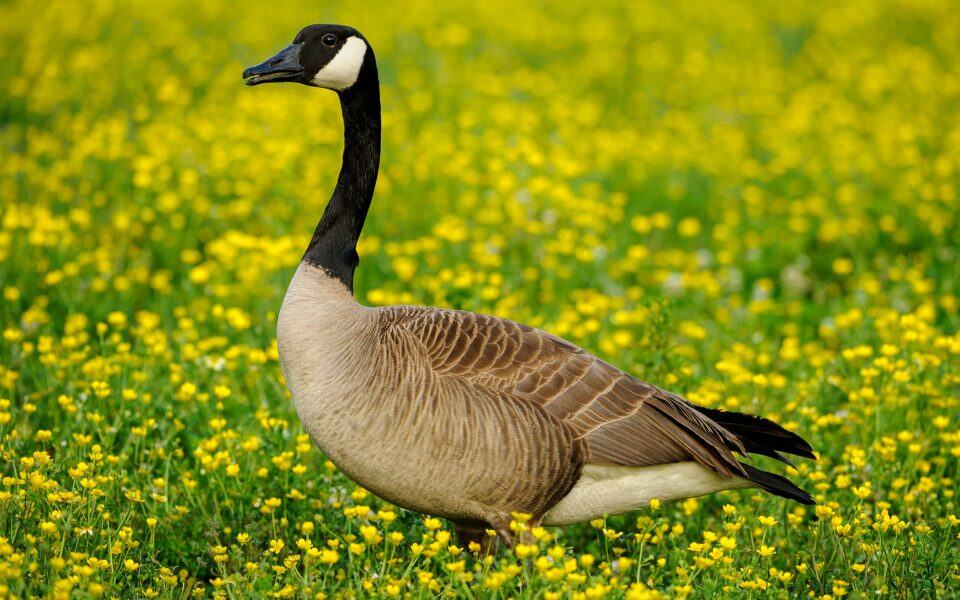Waterfowlers often admire the sight of Canada geese flying in their iconic V-formation against a fiery sunset or soft sunrise. One of North America’s most abundant native waterfowl species, the Canada goose (Branta canadensis) inspires both appreciation and frustration. Though admired in the wild, it’s often considered a nuisance in parks, golf courses, and urban areas due to its mess and aggressive behavior.
The giant Canada goose is the largest of seven recognized subspecies, with males weighing up to 13 pounds and females up to 11. While most breed in Alaska and Canada, they now nest in all of the lower 48 states. Some migrate south for winter, while many remain year-round in areas with open water and food.
Canada geese are identified by their black head and neck with a white chinstrap. They have gray-brown bodies, pale bellies, and black tails, legs, and bills. Known for their aggressive nature, they will charge and hiss when threatened.
They mate for life and nest on elevated ground near water. Females incubate 2–8 eggs while males guard the nest. Goslings hatch in under a month and can walk, swim, and feed almost immediately.
Primarily herbivores, geese eat grasses, aquatic plants, grains, seeds, and berries, occasionally consuming insects or small fish. Eggs, goslings, and nesting females are vulnerable to predators like raccoons, foxes, gulls, and eagles.
By the early 20th century, the giant Canada goose was nearly extinct due to overhunting and habitat loss. A remnant population found in Minnesota helped spark successful conservation efforts. Today, they are widespread, with about 3.5 million in North America, and are listed as Least Concern by the IUCN.
Urban adaptability has led to booming populations, but issues like airport collisions and disease from droppings make management important. Hunting, especially of resident flocks, helps control numbers through expanded seasons and bag limits.

Tes Jolly
Did You Know…
* also called a honker, the Canada’s classic raspy honking is produced by a tubular shaped organ called a syrinx, the equivalent to the human larynx. Bending and curving of the neck changes the calls and their pitch and tone.
* male and female Canada’s look nearly identical except the tail feathers on the adult gander are more rounded than the female’s pointed feathers. The female’s bill is tapered laterally and more pointed than the gander’s. Male geese have a bigger and broader head and neck.
* an adult female is called a goose; a male is a gander. A group of baby geese is called a gang brood or gaggle. A migratory flock is called a chevron or skein.
* the Canada goose has 20,000 to 25,00 feathers, a combination of flight and down feathers. Flight feathers on the wings molt all at once in late summer causing the birds to be grounded for about 3-5 weeks. Birds tend to move toward open areas of water with ample forage sources where they can walk to feed or float to escape predators.
* Canada’s have monocular vision, using each eye independently. They can see 180º vertically and horizontally. The ability to see ultraviolet light waves assists them in flight to see greater distances.
* geese can shut down one hemisphere of their brain during sleep. Unihemispheric slow-wave sleep (USWS) allows them to sleep with one eye open to watch for predators and still rest.
* geese live a long life from 10 to 25 years. A female Canada goose was banded in 1969 and found 30 years and 3 months later.
* the Canada’s V-flight formation helps conserve energy and maintain communication. The lead bird reduces wind resistance and creates a drafted airflow that benefits the birds behind it. The lead changes periodically as the lead bird tires and drops back and another bird moves into the lead.
* migrating Canada geese fly at about 3,000 feet. The maximum flight ceiling is unknown but they have been reported as high as 29,000 feet. It can travel up to 1,500 miles per day in optimum weather conditions. Average speed is about 40 mph, but up to 70 mph can be achieved with a good tailwind.
* the nickname, sky carp refers to its reputation as being poor table fare, though young geese can be made delicious when prepared like rare steak. Older tough birds make great pastrami and jerky.
Join our weekly newsletter or subscribe to Gamekeepers Magazine.
Your source for information, equipment, know-how, deals and discounts to help you get the most from every hard-earned moment in the field.





